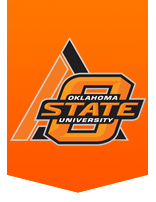Holding on to calves, considerations and planning
With the market breaks and slow recovery in market prices due to market disruptions caused by the corona virus, producers are holding on to calves in hopes of hitting an up-tic in prices. This is usually a fairly easy process at this time of year, when summer grasses begin growing rapidly and byproduct feeds were easy to come by. But, many of our normal ‘plan B’ options are gone.
This year changes in the energy sector economy has shut down many ethanol plants taking away distiller’s grains as an option, the go-to byproduct feed for most of our finishing and growing cattle operations. Transportation and logistics issues have reduced trade and availability of many other byproduct feeds. Dry weather in areas of western Oklahoma and the Panhandle have limited spring forage growth.
If cattle are being held for a better market, there are things that can be done. Producers should have market plans and alternatives, targets for a date or a market price that will be adequate to meet the goals of the producer. This will make the decision process for selling easier and ensure a rapid response when the benchmark price is reached. As with all goals, these benchmarks should be achievable and reasonable and a timeline needs to be set, you cannot keep these calves forever.
Large steers, weighing 800 to 900 pounds have a short time frame for holding them, you could keep them around for a few weeks or a month, but they will be hard to market if they get much bigger. Smaller steers can be grown at higher rates and kept for a longer timeframe. Heifers always have another option, if the genetics are good and they have not been implanted, they may make a brood cow for someone in the future.
If you are going to hold calves in hopes of a better market and lack of spring rains have made forage availability an issue, range and pasture conditions can be damaged by overgrazing which will limit future production. In these cases, a sacrifice pasture or drylot should be used to decrease the impact on the rest of the pastures.
Large cattle gaining slowly (around 1 pound per day) have fairly low protein and energy requirements (about 7% crude protein and 52% total digestible nutrients). Nutrient needs of other growing cattle depend on the body weight and targeted rate of gain. A 700 pound growing steer gaining 1.5 pounds per day needs a diet with 56% total digestible nutrients and 8.5% crude protein, while to gain 2 pounds per day he needs diets with 10% crude protein and 60% total digestible nutrients.
Feeding mixed diets based on hays, straws, or crop other residues (corn stalks or cotton gin trash) can be a viable option. Feeding long-stem hay with a supplement is very common but intake of very low quality crop residues separate from concentrate feed can be fairly low and variable, so waste will be an issue. If moderate quality hay (10% crude protein and 55% total digestible nutrients) is available very little supplemental feed may be required for acceptable performance. Straws and other crop residues are often around 4 to 5% crude protein and 45% total digestible nutrients, so more concentrate will be required.
Concentrate feed options that we usually depend on (distiller’s grains for instance) may be unavailable. But corn, grain sorghum, and wheat are priced into supplements with lower commodity prices. Smaller sized seeds like grain sorghum and wheat need to be processed before feeding but corn can be fed whole with only a 10 to 15% reduction in utilization. Feeding wheat needs to be managed closely, acidosis and other digestive upsets can occur with poor mixing or feeding management, it really should be limited to 1/3 of the entire diet and 50% of the grain portion of the concentrate.
Grain sorghum is lower in energy density compared with corn or wheat and must be ground for feeding. Prolonged feeding of grain sorghum can cause issues with urinary calculi because of high phosphorus and potassium in these diets. To prevent this, consider these steps: feed higher levels of calcium should be included with a calcium to phosphorus ratio of at least 2 to 1, acidify urine by adding ammonium chloride or other acid forming salts at 1.5 ounces per day, and add additional salt to the diet (up to 3 or 4%) to increase water intake and thus urinary output. Clean cool water is thus important.
Grain screenings can be used, they will be more variable and have less energy than feed grains (86% of the feeding value of corn), but often have more protein than corn. There are many more byproducts that can be used depending on availability, but knowledge of their feeding value and feeding characteristic is important before buying.
Protein feeds will be required to meet the requirement of growing cattle fed diets. Cottonseed meal is the traditional high protein feed used in the South and Southern High Plains. Other protein feeds, like sunflower meal (35% crude protein) or ground whole sunflowers can be used when available.
Mineral supplements or mineral premixes need to be supplied to cattle. A mineral premix balanced for the specific feeding situation should be available through feed suppliers.
There are many options available contact your local Extension educator for assistance in finding the best solution.







